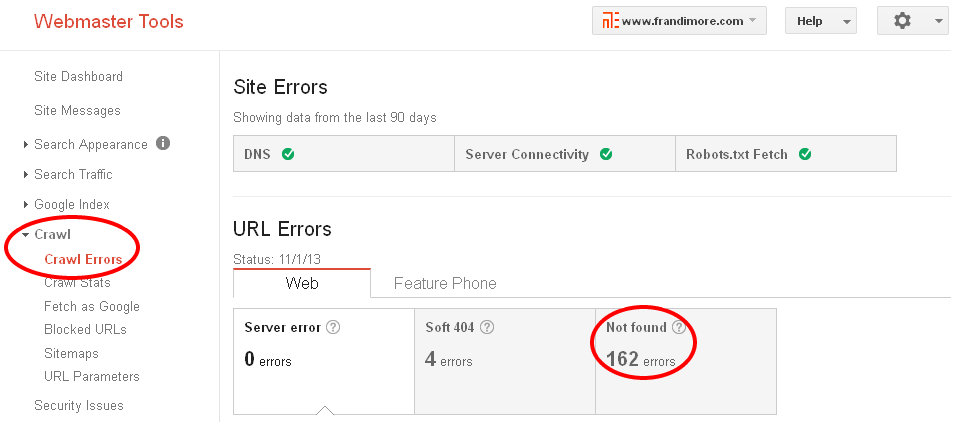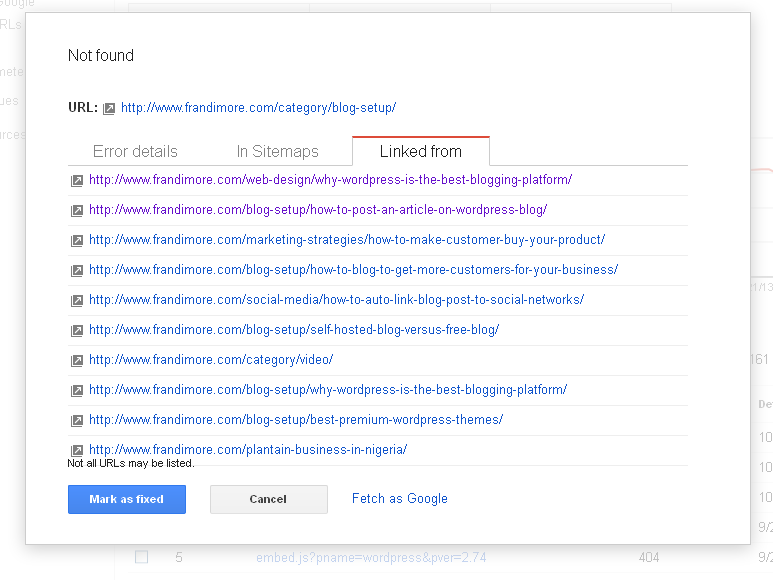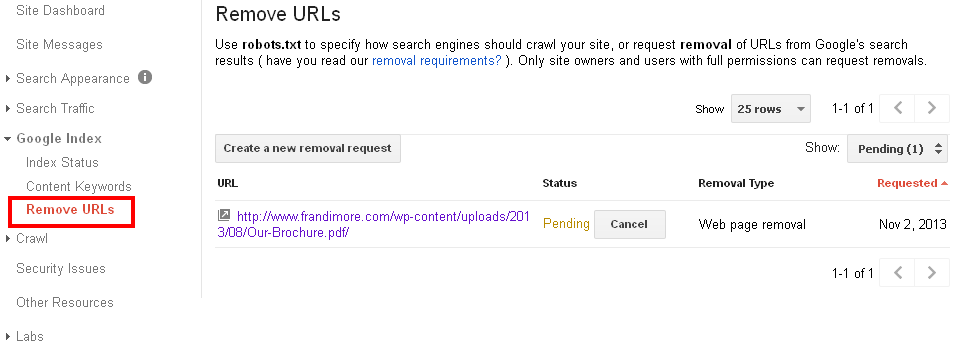Error page can pose significant threat to website health in terms of user experience and SEO. That does not mean that they are entirely bad but, they do not add value to our SEO effort in getting web page indexed and rank better on search tables. I sincerely feel it is expedient to have fore-knowledge of what this error 404 is all about and how it is generated for the sake of people who might not know.
What is 404 error?
404 errors is the page that is returned from a website server when requested web page could not be found and it has not been adjudged permanently deleted. Let me explain this process. When you type a URL of a page on your browser, you’re simply requesting information from the server that contains the info through the browser.
So, what the browser does is to send a request to the server for that specific page and the server in return will send response code called hyper text transfer protocol (HTTP). If the page is found, the server will send 200 success codes; if not, it will send either 404 or 410 error. 404 error means the file could be missing or relocated or temporarily deleted while 410 error means the web page has been permanently deleted. You can see that this error page is just server response to requests.
However, it is important to manage very effectively this page because it can hamper website credibility, reduce conversion rate and render SEO effort unproductive.
Do I hear you say how?
– When visitors repeatedly land on a generic 404 error page, it indicates the site lack good maintenance hence visitors may not have confidence on the site and the product or services no matter how convincing the sales copy.
– Imagine a Call-To-Action link button on your website or email copy or banner landing on an uncustomized error page. It can be disheartening. That’s why is good to test and preview every campaign or posts before hinting the publish button.
– Search engine bots always abandon links that does not proceed to intended destination. (though they still come back to re-crawl it sometime soon). This will definitely reduce the number of pages they can crawl within the website at that given time thereby pointing the site at risk of page index, link propagation and rank initiation. These are detrimental to SEO.
You can see that it is necessary to take pr-active measures to fix this error page before it cause monumental damage. To know that some of the reasons why this page show up is sometimes out of our control keep us on our toes as webmaster.
Reason why 404 error appear.
– Misspell URL either on the part of visitors or site manager. It does happen. Perfection is a myth you know.
– Website redesign.
– Renamed or deleted web pages or category.
– Expired pages like job listing, products with minimum timeline existence, news site, etc.
– Changing from HTTP to HTTPS and vise verse.
How to identify, diagnose and fix 404 errors
The first step towards fixing this problem is to find the URLs that are responsible for it. There are numerous online tools we can use for this purpose.
1. Google Webmaster Tools
This is about the best place to start because Google is a leader and pathfinder in search engine business. Thank God they offer webmaster tools free of charge for individual that have Google account. This tool helps to monitor the general state and health of website. As a site owner, it is very important to have this tool.
All you need to do is sign up for Google account and then go to webmaster tool to submit your website URL. You can even submit more than one website. To access the tools, you’ll have to verify the site as the owner. To check your website error pages, click on the site you want to check its error pages if you submitted more than one website.
Click on Crawl and then click Crawl errors within the sub-menu. It would show box-like tables with clickable headers to important info. Click on ‘Not found’ box and it would show all the error pages encountered over a given period on a table and chart. The table can be downloaded in .csv format if you want to inspect it later. 
Click on each of the URLs to unveil information that can aid fixing the error. These info include, the page that link to it, the time Google detected the error, marked as fixed, etc. These tools make Google webmaster the best place to go if you want to fix your error pages holistically. Another place that performs like Google is SEOMoz. You must also have account with them to access the tool.
2. Use broken link finder
You can simply locate broken links and then make effort to fix them immediately by using broken link finders like;
– Xenu Link Sleuth Tool: This tool help you locate error pages it can find and generates a report. It is good for quick check.
– Screaming Frog: Performs better and the free version can crawl up to 500 URLs.
The fixing process from SEO angle
Now that we’ve found the URLs and how they cause website server to return error, we should make concerted effort to fix them so that they don’t retard the growth performance of our website. We have to consider both the audience and SEO while doing this. There are so many ways we can really go about it. One thing I’ve discovered online is that any ‘white-hat SEO techniques are user friendly while ‘black-hat’ SEO process are sometimes anti user experience. So, this tutorial is in consonance with creating wonderful user experience while tracking website error pages the SEO way.
Correct spelling mistakes on URL: This is the most commonly hidden and sincere mistake any webmaster can make. Trace the link to the page and edit it. Also, Google webmaster tool provides links pointing to the page which makes it easier to quickly locate and correct them if they are internal.
However, if the links are external, just inform the sites of the error and provide the correct URL. They’ll be glad to change it because it’s neither good for both parties from credibility point of view. But if the number of external link is high (maybe they are within email campaign, eBooks, offline promotional materials, other websites, cached pages on search engine, etc), you might have to setup 301 redirect to the new page. This will automatically pass the same link equity and page authority to the new page.
Setup 301 permanent redirect: If you run job listing or news website or sell products that have limited timeline expiration, the tendency of generating less important pages that could cause high bounce rate and sometimes delete them is inevitable. The best probable thing to do is to setup 301 redirect to categories that are relevant to each specific URLs.
In the case of news website, old news could be archived on monthly or yearly basis because reference could still be made to old news.
Please, note that not every redirect should be pointing to the home page. What is paramount is the creation of relevancy and connectivity in the flow of navigation. If your website is running on WordPress, you may use 404 Redirect Plugin to make the job much easier.
Use Robot.txt: It is common thing to either delete or rename a category that contains large number of web pages. This would drastically increase the number of error pages. It happened to us when we changed /blog-setup to /web-design. All we did was to add /blog-setup to our website robots.txt files on the server. This would communicate to search engine spider not to crawl the folder hence, no error would be generated.
Delete error pages out rightly: It is possible to still find error URL on webmaster tools even after correcting/deleting URL especially if it is high priority page. To get rid of this, you can use webmaster tool to request the removal of the lingering URL.
To do this, log in to your webmaster tools. On the dashboard, go to ‘Google Index’ and click on ‘Remove URLs’. Click ‘Create a new removal request’. Paste the error URL you want to delete into the box and click continue. You have the option to cancel it on the new page that emerges. That’s all.
Design a custom 404 error page: Since it is nearly impossible to have error free site, it’s therefore needful to design a custom page for 404 errors that would create an interactive interface capable of turning unavoidable error to lead. There are design tips, insights and best practices to follow which you can get on creating 404 error page design that capture visitors attention.
It is a myth to have 404 error free site as much as having 1% bounce rate. So, how have you been managing your error pages?
- How to Add Post Thumbnail Image to RSS Feed on WordPress - February 16, 2016
- 10 Tips for Getting the Most out of Google Image Search - January 19, 2016
- How to Add Next and Previous Post Links with Thumbnail - January 11, 2016




